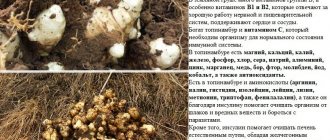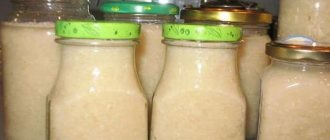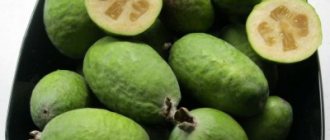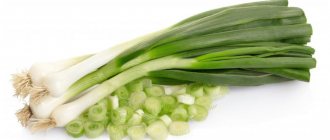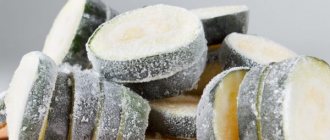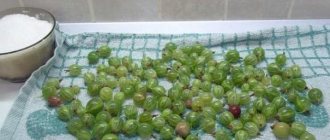Jerusalem artichoke, rich in substances beneficial to our health, has a relatively short shelf life. How to increase its shelf life - is it possible to freeze Jerusalem artichoke? We'll tell you what will happen to the earthen pear after thawing, and which option for freezing Jerusalem artichoke for the winter to choose.
Jerusalem artichoke can be classified as a diabetic product - it helps lower blood sugar levels. Jerusalem artichoke is great for a healthy diet. It contains fiber, various amino acids, vitamins and minerals such as iron, potassium, etc. I want to keep such a useful product for a long time.
The question of whether Jerusalem artichoke can be frozen arises due to the short shelf life of this root vegetable. The fact is that fresh Jerusalem artichoke contains a lot of moisture, but during storage it evaporates, so Jerusalem artichoke quickly fades and its texture changes for the worse. In addition, thin skin contributes to damage and rotting of tubers.
So, is it possible to freeze Jerusalem artichokes in the freezer? Yes, it is possible and this method of preparation will help preserve the vegetable for months.
Is it possible to store earthen pear in the freezer for the winter?
The vegetable is consumed all year round. Ground pear is a frost-resistant plant. Goes well into winter. Leaving the root vegetable in the ground, you can dig it up in the spring and delight the body with vitamins.
Jerusalem artichoke has one drawback - storage. It has a thin skin and cannot last long like potatoes. Fresh Jerusalem artichoke is a juicy fruit with a large amount of moisture. Another feature is that it fades quickly. And even in the underground, in the basement, in boxes with sand, it cannot be stored for long.
But not everyone knows that it can be frozen. The inulin present in the fresh root is only slightly lost in the frozen product. In addition, when the vegetable is frozen, pathogenic microorganisms die, the safety of the fruit improves and all organoleptic indicators are preserved:
- taste;
- color;
- aroma.
Advice
You can freeze root vegetables. You just need to understand how to eat it after defrosting and in what recipe to use it.
The importance of timely harvesting
When is the best time to dig up Jerusalem artichoke tubers for food? It is important to harvest root vegetables in a timely manner so that they have the best taste and sufficient vitamins. The most suitable time for collection is the second half of October - the first half of November.
The later the harvest is harvested, the larger the fruits will be and the greater the concentration of nutrients will be contained in the tubers. If you dig it up earlier, the nutritional value of Jerusalem artichoke will decrease; not all useful substances will have time to pass into the fruit and will remain in the green part of the plant.
Advantages and disadvantages
The advantages of this storage method:
- Retains nutritional and beneficial properties for 3 months, and with shock freezing for 4 months.
- Root vegetables will not spoil when frozen.
- Any fresh root vegetables are suitable for this storage method.
- Suitable for dietary purposes.
- When thawed, the aroma and taste are preserved.
Disadvantages of freezing:
- If processed incorrectly, color is lost and the product softens.
- Does not retain structure after defrosting.
- With a large harvest, the volume of frozen product is limited by the size of the freezer.
Frozen root vegetables can be stored in the freezer for 3-6 months.
When to collect Jerusalem artichoke leaves for tea
The best time to collect leaves is during flowering. To preserve the collection, the plucked parts of the plant must be thoroughly dried. A warm room with low humidity is suitable for this. It is important that the leaves are not exposed to sunlight, which destroys all the beneficial properties of the plant.
You can use an electric dryer. After processing, the leaves need to be placed either in a fabric bag or in a glass jar, but the first option is preferable - in this case, the collection will “breathe” and will be preserved for a longer time.
How to freeze at home in the refrigerator?
Ground pear can be frozen in different ways:
- entirely;
- in pieces;
- grated on a grater.
It is placed in the freezer immediately after washing or blanched. Moreover, you can blanch with steam, in water or in whey. It all depends on what you will cook later.
Methods
- Just freezing.
- Blanching with water or in milk curd whey.
Advice
Reference! Blanching is immersing the product for a few seconds or minutes in boiling water or another solution. You can also do this over steam. The product is then cooled in ice water or in air. Blanching is very good before freezing. With this preparation, root vegetables retain their color and shape.
You can freeze any fresh root vegetables. Suitable for damaged ones and those with dark spots.
Preparation
Root crops:
- Select suitable ones.
- Wash, clean.
- Cut into small cubes or noodles.
Inventory for different freezing methods:
- Pot.
- Colander.
- Silicone mat.
- Storage container.
Easy way
- Place washed, dried, chopped or grated root vegetables in a plastic bag, release the air and put them in the freezer.
- Another option: carefully place chopped or grated vegetables on a silicone sheet, freeze them, then pour them into a container and leave them for long-term storage.
For storage in the freezer, you can use any small container suitable for freezing.
Blanching
You will need:
- Pot.
- Colander with handle.
Important!
Interesting! When blanched in whey, the vegetable develops a slightly sour, pleasant taste.
Blanching freezing process:
- Pour whey or water into the pan.
- Heat to 100 degrees.
- Place root vegetables cut into cubes or noodles in a colander.
- Lower the colander into the pan so that the cut pieces are in the liquid.
- Secure a colander to the pan.
- Blanch for 9-10 minutes.
- When finished, remove, cool, and let dry.
- Place in a container or any container suitable for freezing food.
Serve in portions as needed for consumption at a time.
Waxing
A very good method that allows Jerusalem artichoke to remain juicy for a long time. Root vegetables are carefully cleaned of dirt, being careful not to damage the thin skin. Dry in a shady place for about 2-3 hours.
Then, with a gentle, quick movement, dip the tubers into melted paraffin. If you can get a special food item, that would be great. In the absence of one, you can get by with a regular candle one. After the top crust has hardened, carefully place the prepared Jerusalem artichoke in cardboard boxes or wooden boxes.
Put away for storage in the basement, subfloor or cellar. If you plan to save root vegetables in an apartment, then a place under the bed or the bottom shelf of a cupboard is quite suitable. An insulated balcony will also do.
Advice. It is recommended to do waxing in a cool room so that the Jerusalem artichoke cools down as quickly as possible. Overheating is more harmful to him than cold.
As it is?
How to eat a frozen product, what is prepared from it?
Once defrosted, you can prepare healthy meals. Jerusalem artichoke is consumed raw, boiled, or stewed. It is especially good when fried; it tastes like fried potatoes, only sweet.
It is used to prepare:
- salads;
- tea;
- coffee drink;
- chips.
Casserole
Ingredients:
- Jerusalem artichoke – 500 gr.
- Fresh carrots – 100 gr.
- Green peas – 100 gr.
- Eggs – 3 pcs.
- Milk – 6 tbsp.
- Salt to taste.
- Oil for frying.
Preparation:
- Fry the carrots grated on a coarse grater, add green peas and defrosted Jerusalem artichoke.
- Beat eggs with milk, pour over vegetables.
- Grease the mold with oil and place the omelette and vegetable mixture into the mold.
- Place in an oven preheated to 180 degrees.
- Bake for 30 minutes.
Important!
Advice! Jerusalem artichoke easily absorbs the aroma of seasonings. Add your favorite spices to the dish to taste.
Cocktail for weight loss
Ingredients:
- Jerusalem artichoke – 100 gr.
- Half a lemon.
- Walnut – 2 pcs.
How to cook:
- It is better if the vegetable is not completely defrosted. Defrost the product, beat in a blender.
- Add lemon juice and ground walnuts. The nut can be ground in a coffee grinder.
This cocktail can replace one meal.
Basement or cellar
If you are lucky enough to be the owner of a cellar or basement, then the problem of how to store Jerusalem artichoke is not worth it.
There are generally a lot of options here, each of them is easy, requires little cost and effort:
- Bury it in a container with sand, where carrots are usually stored.
- The whole Jerusalem artichoke root with tubers is dug up without breaking. Place directly with the ground in a container of suitable size. Placed on the floor.
- No containers? Regular boxes will do. You just need to sprinkle moss, peat or sawdust on top.
- Lubricate the root vegetables with clay mash and dry them. Carefully place in thick plastic bags. They tie it, trying to leave as little air as possible.
The most important thing is to be sure to leave plant stumps 10 cm long. This way, the root vegetables retain more nutrients.
If there is no cellar or basement, then a cool pantry or an insulated balcony will do.
The optimal temperature for this storage method is 2-4°C. If possible, you need to regularly inspect the bookmarks in order to notice the beginning of the putrefactive process in time. Jerusalem artichoke is a succulent plant, it can also spoil.
Advice. Beets and potatoes are bad neighbors for root vegetables. It is recommended to place them away from each other.
how to store garlic at home
List of storage alternatives
There are many ways to store Jerusalem artichoke, other than in the freezer, and they all depend on the amount of harvest.
For large volumes
- In cellars or basements. Place in boxes, sprinkle with sawdust or sand. There is no need to clear the soil; it protects the vegetables from drying out.
- You can leave them to overwinter in the garden beds. The root crop tolerates frost well. In spring it becomes juicier and sweeter. Be sure to dig it out as soon as the snow melts. But don't forget that mice and rats love vitamins too.
- In snow piles. It is necessary to prepare the place and clear it of snow. Tubers are laid, then a layer of snow. Repeats several times. Place sawdust and straw on top.
- In the trenches. Dig a shallow hole and cover the ground with spruce branches. Place flower pots on top with peeled vegetables already placed in them. Next, cover with snow, then with hay or straw. We cover everything with roofing felt. We store until spring.
Freezing
Jerusalem artichokes are dug up and washed. Here you don’t have to worry too much about the peel, because it’s not needed. Next, the fruits are peeled, cut into slices, cubes, plates - whatever you like. Place in a freezer bag or special food container. Place in the freezer. Such root vegetables can be stored all winter.
Advice. Freeze Jerusalem artichokes in small portions, at a time.
how to store apples at home
Defrosting mushrooms
There are many ways to defrost mushrooms, both quick and time-consuming. So, depending on the situation, you can choose a more suitable method.
The most correct and useful, but at the same time the longest, method will be slow defrosting. To do this, transfer the mushrooms from the freezer to the refrigerator overnight. In the morning they should thaw naturally, as a result of which they will retain all the benefits. It is better to put them in a colander so that they are not watery. It will take about 2-3 hours.
The fastest, but not the healthiest way to defrost mushrooms is in the microwave in defrost mode.
If the mushrooms are clean and do not require washing, then you can throw them frozen into boiling water and boil them. This way they won’t have time to get water.
You cannot leave defrosted mushrooms in the refrigerator, as they spoil very quickly when exposed to pathogenic bacteria.
Tags: freeze, winter, Jerusalem artichoke
About the author: admin4ik
« Previous entry




